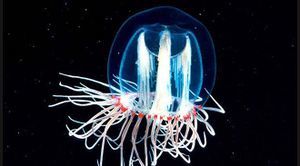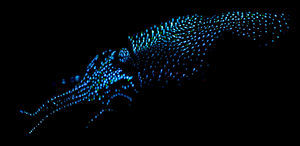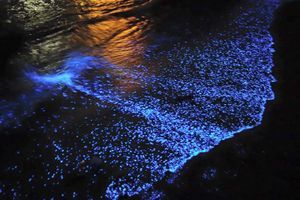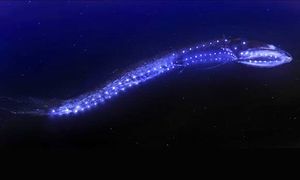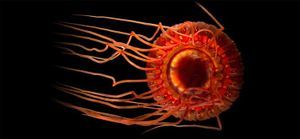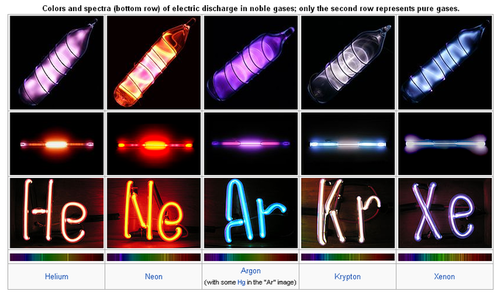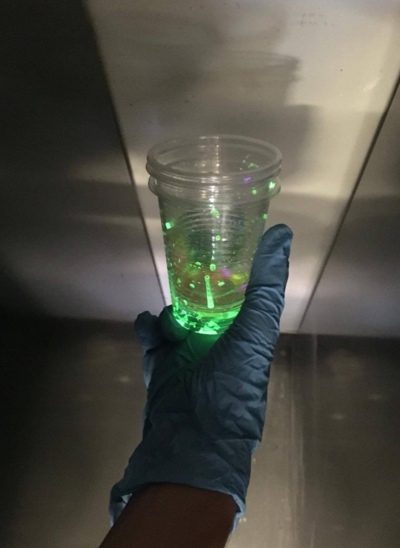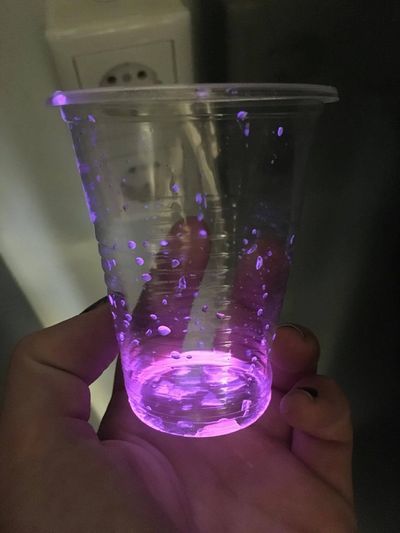Difference between revisions of "* Light Radiation *"
| Line 51: | Line 51: | ||
<nowiki> | <nowiki> | ||
-- </nowiki> | -- </nowiki> | ||
| − | |||
Revision as of 19:51, 18 October 2016
Light Radiation
--
Research
*** Bioluminescent creatures ***
Bioluminescence is the production and emission of light by a living organism. It is a form of chemiluminescence. Bioluminescence occurs widely in marine vertebrates and invertebrates, as well as in some fungi, microorganisms including some bioluminescent bacteria and terrestrial invertebrates such as fireflies. In some animals, the light is produced by symbiotic organisms such as Vibrio bacteria.
*** Northern Lights ***
The bright dancing lights of the aurora are actually collisions between electrically charged particles from the sun that enter the earth's atmosphere. The lights are seen above the magnetic poles of the northern and southern hemispheres. They are known as 'Aurora borealis' in the north and 'Aurora australis' in the south..
*** Neon Lights ***
A neon tube light is a sealed glass tube with a metal electrode at each end, filled with one of a number of gases at low pressure. A high potential of several thousand volts applied to the electrodes ionizes the gas in the tube, causing it to emit coloured light. The color of the light depends on the gas in the tube.
--
*** Experiment #1 ***
The lights we investigated are all coloured lights that become visual trough a chemical reaction. For this experiment we used glow sticks that consist of a translucent plastic tube containing isolated substances that, when combined, make light through chemiluminescence. We wanted to know if we could obtain these substances separately in an attempt to have more control over when and how the illuminance would take place.
*** Strobe Light ***
A strobe light flashing at the proper period can appear to freeze or reverse cyclical motion. Special calibrated strobe lights, capable of flashing up to hundreds of times per second, are used in industry to stop the appearance of motion of rotating and other repetitively operating machinery and to measure, or adjust, the rotation speeds or cycle times. Since this stop is only apparent, a marked point on the rotating body will either appear to move backward or forward, or not move, depending on the frequency of the strobe-flash. If the flash occurs equal to the period of rotation (or evenly multiplied, i.e. 2*π*n/ω, where n is an integer and ω the angular frequency) the marked point will appear to not move. Any non integer flash setting will make the mark appear to move forward or backward, e.g. a slight increase of the flash frequency will make the point appear to move backward.
Strobe lighting has also been used to see the movements of the vocal cords in slow motion during speech, a procedure known as video-stroboscopy. A common use of a strobe flash is to optimize a car engine's efficiency at a certain rotational period by directing the strobe-light towards a mark on the flywheel on the engine's main axle. The strobe-light tool for such ignition timing is called a timing light.
